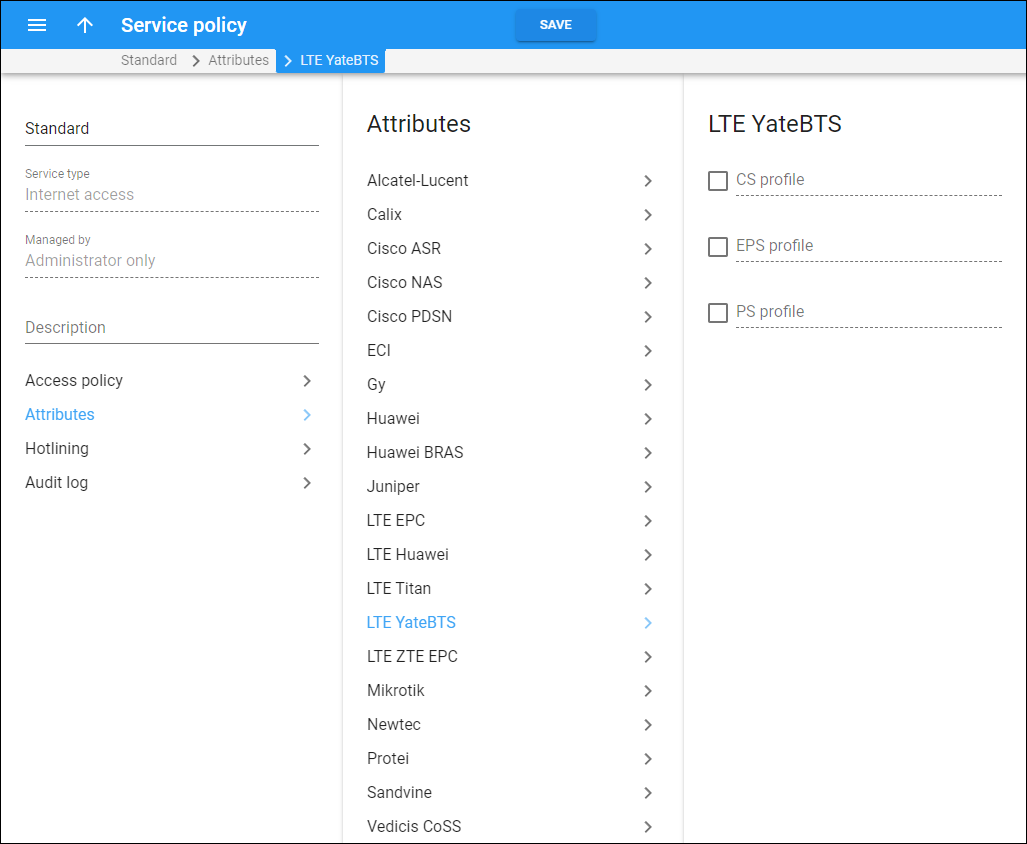Wireless operators can use PortaBilling to provision their subscriber information to HSS and/or bill their subscribers for the LTE service. The integration of PortaBilling with EPC components produced by Yate, e.g., YateHSS/HLR for subscriber data provisioning and YateUCN for real-time charging, allows wireless operators to use Yate products exclusively to organize and build their network infrastructure.
Subscriber data provisioning via YateHSS/HLR
YateHSS/HLR functions as a centralized subscriber database that stores and manages subscriber information for LTE service provisioning.
Using PortaBilling, you can provision subscriber details such as subscriber’s phone number (MSISDN), SIM card IMSI, and profile details (e.g., LTE service, quality of service information) to activate SIM cards in YateHSS/HLR. This registers subscribers on the mobile network and gives them access to the LTE service.
To provision subscriber details to YateHSS/HLR, an administrator creates a product for the LTE service and enables the Mobile Network Provisioning service for it. When a new mobile account is created, PortaBilling sends the subscriber information to YateHSS/HLR via the External System Provisioning Framework (ESPF).
With PortaBilling you can also update YateHSS/HLR with any subscriber changes (e.g., account is blocked or is assigned a new product).
Online charging via YateUCN EPC
The PortaBilling integration with YateUCN – an LTE EPC component – enables you to provide LTE service and charge your mobile subscribers for it in real time.
With this integration, PortaBilling operates as an OCS (online charging system) and communicates with the YateUCN EPC using the Diameter (Gy) protocol for real-time user authorization and rating. It also instructs the YateUCN EPC to redirect users to a hotlining portal if and when they run out of funds/lack available quota.
YateUCN EPC supports rating groups. This enables you to introduce content-based charging. For example, you can charge users for watching YouTube videos or visiting social networks although traffic for using your self-care portal always comes free of charge.
Configuration
Before configuring integration with YateBTS, obtain the names of the subscriber profiles preconfigured in the YateBTS (CS profile for voice calls/SMS and EPS profile for data service). These profile names will be needed for service policy configuration in PortaBilling.
- On the PortaBilling web interface, configure the YateHSS event handler and subscribe to the needed events, as in the ESPF configuration handbook.
- Сonfigure a service policy of the Internet access service type.
- Navigate to Attributes > LTE YateBTS and specify the subscriber’s profile details:
- for the voice calls – select the CS profile checkbox and specify the subscriber CS profile’s name received from YateBTS.
- for the LTE services – select the EPS profile checkbox and specify the subscriber EPS profile’s name received from YateBTS.
- for the 2G/3G data services – select the PS profile checkbox and specify the subscriber EPS profile’s name received from YateBTS.

Then, assign this service policy to the product or directly to a user’s account.


